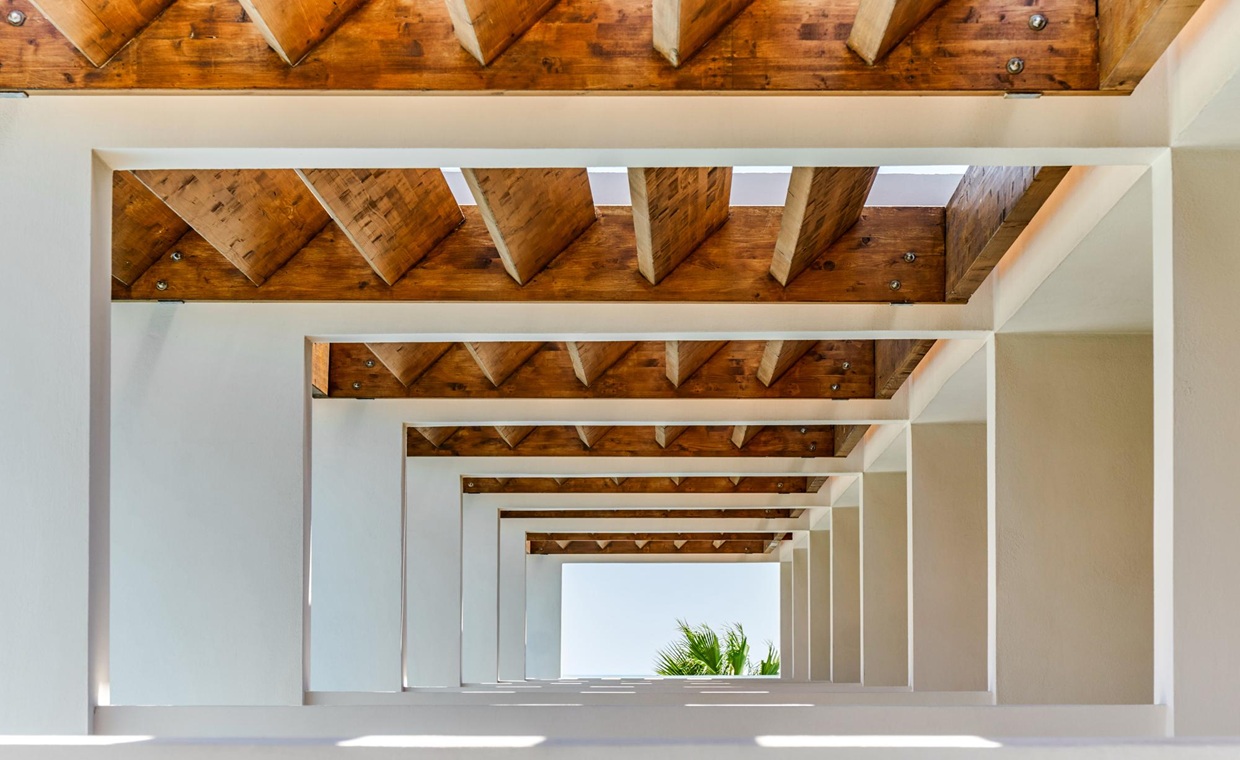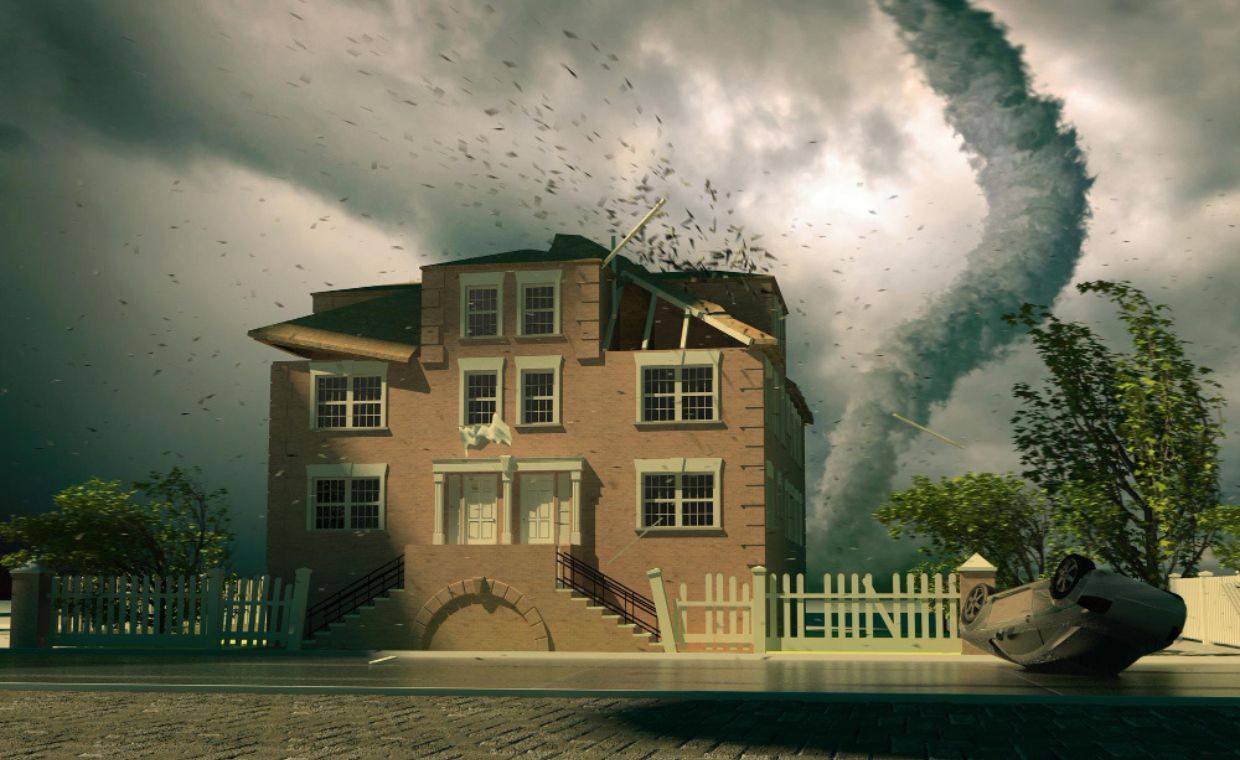
Leaching occurs when the surface of the brick masonry, brick flooring, plaster or concrete absorbs water through the joints, voids, or cracks and when evaporation takes place at the surface.
What is Efflorescence of Brickwork or Concrete?

Efflorescence – Formation of Salt Deposits
Courtesy – henleystone
The surface of the brickwork, brick flooring, plaster, or concrete leaches the lime compounds, and it forms the formation of salt deposits white in colour on their surface is known as efflorescence or saltpetering.
How Efflorescence Occurs?

Efflorescence on Concrete
Courtesy – concretecountertopinstitute
In case of concrete, the surface moisture (water) dissolves the lime and Ca(OH)2. It is finally drawn to the surface where it reacts with atmospheric CO2. This reaction forms white deposit (efflorescence – calcium carbonate – Ca CO3) after the evaporation of water. Use of construction materials (unwashed aggregates or water) which contain salts may also cause efflorescence on the surface of the concrete.

Efflorescence on Brick Wall
Courtesy – deckerhomeservices
In case of masonry, water dissolves the alkali sulfates which are already present somewhere in brick masonry, either in the brick or the mortar or possibly a combination of both. The dissolved solution migrates to the surface of the wall where water evaporates, and generates the white powdery deposits (efflorescence – efflorescent salts like the alkalies of sodium sulphate (NaSO4) and potassium sulphates (K2SO4)). Use of materials (clay, aggregates or water) which contain salt will cause the efflorescence on the surface of brick wall.
Efflorescence is normally found in the white colour, but sometimes, it appears on the walls in green or yellow colour, which depends on the type of salts.
Unfortunately, nothing has proven 100% effective against efflorescence problem. Efflorescence once occurs becomes the most painful problem for the homeowner.
Hence, homeowners need to understand how efflorescence is caused. Preventive measures are the best, and if preventive measures are not taken then how to remove efflorescence as it appears.
What Causes the Efflorescence in the Brick Masonry?
Here are the important reasons which lead to the efflorescence on the brick masonry.
01. Causes and Prevention of Efflorescence – Use of Salty Water at the Time of Execution:
Bricks are made from clay soil, water, etc. If the clay soil and water contains soluble salt, the efflorescence may appear on the brick surface after manufacturing.
Sometime, after execution of the brick masonry, efflorescence may appear on the surface.
It appears due to the use of the unwashed aggregates, salty curing water, making mortar with salty water, or use of high alkali Portland cement in the mortar, etc.

Testing of Bricks For Efflorescence
Courtesy – happho
To prevent the efflorescence, the amount and quantity of water used during construction activity should be controlled. It should be used only that much, which is necessary for actual construction. It should be ensured that each material contains only the permissible amount of salt. Before executing the brick masonry, clay bricks should be tested for efflorescence as per the codal provisions. Do the construction with good architectural/structural details. Hence use the low alkali cement, clean washed sands and clean, portable water (salt free) to reduce the efflorescence.
02. Causes and Prevention of Efflorescence – Soluble Alkali Sulfates:
The occurrence of efflorescence is greater when cool wet weather is followed by a dry and hot spell. Sometimes, the salty air near the seashore area may also be the reason of efflorescence. In both the cases, the surface gets sufficient moisture and it dissolves the alkali sulfates which are finally drawn to the surface. It forms white deposits on the surface of the wall after the evaporation of water.
To prevent the efflorescence, attention must be paid towards preventing the water so that it does not dissolve the alkali sulfates. It is advisable that the weatherproof paint and waterproof plaster should be applied to the exterior surface of the house.
03. Causes and Prevention of Efflorescence – Migratory Paths for Moisture Ground:
Another culprit is, of course, subsurface soil. Sometimes the soil below contains the high amount of salty water which percolates in the walls through the capillary action. Sometimes salt-laden soils are used for backfilling of wall, which also migrates from ground to wall through the capillary action. Thus, if the wall of the ground floor is directly connected to the subsurface soil, then the efflorescence may appear on the lower surface of the wall. It is generally observed where the house does not have barriers like plinth protection (damp proof course).
Alkali sulfates travels through the pores of the masonry wall. Hence reduce the natural pores in the wall to prevent efflorescence. Mortar or concrete should be well compacted with the mechanical vibrator. It will make harder mortar or concrete which stops the migration of salts. Use admixture which inhibits efflorescence.
Remember to read the instruction book before you use the admixture of any company. Provide the plinth protection to the exterior wall of the house. I.e. Also provide DPC which stops percolation of moisture from the ground to wall.
Hence efflorescence occurs when there is sufficient moisture or water-soluble salt present in the wall or a path for soluble salts to migrate through the surface. Thus, reduce the soluble alkali sulfates in masonry, use the good details to prevent water from entering in masonry and use the good construction practices to eliminate the migratory paths for moisture.
How to Get Rid of Efflorescence of Brickwork or Concrete?
Traditionally, peoples use sandblasting for cleaning the efflorescence. But unfortunately, this method erodes the surface of brick or plaster because of the abrasive action and increases the porous of the surface. If the surface is not properly sealed with a waterproofing material, then the porous of masonry will absorb water (moisture), and thus the efflorescence will reappeared.
Early efflorescence can be removed with a brush and water. It can also be removed by hand washing with mild detergent and stiff bristle brush. But for heavy deposits, you may need to follow the below tips. These tips definitely remove efflorescence from the surface of the brick masonry, stone masonry or concrete.
01. Removing the Efflorescence with Diluted Hydrochloric Acid (HCL Acid):

Removing the Efflorescence
- Remove the efflorescence from the surface of the wall by scrubbing efflorescence as much as possible.
- Make the solution by diluting HCL acid (Hydrochloric acid) with distilled water in the proportion of 1:5 to 1:10. The quantity of solution should be used 200 gram per square meter of wall area.
- Apply hydrochloric acid solution on the efflorescence with the help of the brush or scrubber. It should be applied uniformly in terms of concentration and duration of action.
- Rub the surface until white deposits gets dissolved in solutions. Wash the surface with clean and salt-free water.
You can also use zinc sulphate, sulphuric acid, acetic acid (vinegar), citric acid (lemon), glycolic acid, formic acid or baking soda in place of diluted hydrochloric acid to remove the efflorescence from the masonry surface. Remember that several mild individual applications are better than one overpowering dose.
Sometimes water used in the pre-cleaning and post solution-cleaning brings efflorescence reappear or often stronger than before. It appears due to the trapped moisture. The moisture should not be trapped inside. The wall should be sealed properly, so alkalis sulfates do not migrate to the surface. Hence care must be taken towards the trapped moisture.
Sometimes sealing a wall does not perform well against efflorescence of brickwork or concrete as efflorescence already existing in the wall. Hence it would be better to wait until the efflorescence problem has been reduced to a minimum before sealing the wall.
Also Read:
Things to Keep in Mind While Buying Bricks
10 Qualities of a Good Clay Bricks






























